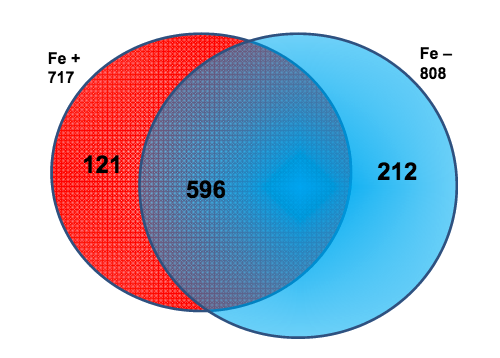Phytoplankton Plastid Proteomics: Cracking Open Diatoms to Understand Plastid Biochemistry Under Iron Limitation
(1) Telluride High School, Telluride, Colorado, (2) Old Dominion University, Norfolk, Virginia, (3) University of Rhode Island, Kingston, Rhode Island, (4) Newport High School, Newport, Washington, (5) University of Washington, Seattle, Washington
https://doi.org/10.59720/16-082
Diatoms, such as Thalassiosira pseudonana, are important oceanic primary producers, as they sequester carbon dioxide (CO₂) out of the atmosphere, die, and precipitate to the ocean floor. In many areas of the world’s oceans, phytoplankton, such as diatoms, are limited in growth by the availability of iron (Fe). Fe is an essential nutrient for phytoplankton, as it is central in the electron transport chain component of photosynthesis. Through this study, we examined if Fe-limitation makes a significant difference in the proteins expressed within the chloroplast, the power source for diatoms. Here, we utilized a new plastid isolation technique specific to diatoms and completed 14 mass spectrometry experiments to determine how many proteins transit the plastid membrane, if there are any differences in the expressed proteomes within the plastid grown under Fe-replete and Fe-limited conditions, and what those differences are. Over 900 unique proteins were identified from the isolated plastids, and cluster analyses of the data verified that statistical differences are present between the Fe-replete and Fe-limited growth conditions. Furthermore, our plastid proteome is in agreement with many of the recognized proteins previously discovered in land plant plastids, suggesting the isolation method followed by proteomic mass spectrometry is valid and sensitive. Through the isolation and analysis of plastid proteins, as shown here, scientists can now better identify which nutrients and/or trace metals directly affect diatom photosynthetic capacity so they can design better experiments to increase CO₂ fixation rates.
This article has been tagged with: